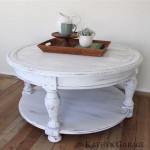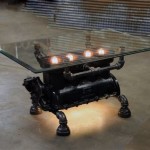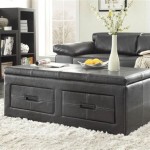What Causes a Glass Table to Explode?
The spontaneous shattering of a glass table, often referred to as an explosion, is a startling and potentially dangerous event. While it might seem inexplicable, there are several scientifically understood causes behind this phenomenon. Understanding these factors can help in preventing such incidents and ensuring the safety of those around glass furniture.
Glass, despite its seemingly solid nature, possesses inherent stresses and vulnerabilities introduced during its manufacturing process. These weaknesses, combined with external factors, can create a perfect storm, resulting in the dramatic disintegration of the glass surface. The term "explosion" isn't entirely accurate, as it doesn't involve a chemical reaction. Instead, it describes the rapid release of stored energy within the glass that culminates in its sudden breakage.
The type of glass predominantly used in tables is tempered glass. Tempering is a heat treatment process that aims to increase the strength and durability of the glass. During this process, the glass is heated to a high temperature and then rapidly cooled. This rapid cooling creates a compressive stress on the surface of the glass while the core remains in tension. This balance of compressive and tensile forces is what gives tempered glass its increased strength compared to annealed glass.
However, the very process that makes tempered glass stronger also makes it susceptible to spontaneous breakage. Microscopic imperfections, invisible to the naked eye, can become points of weakness within the tempered glass. These imperfections, combined with the stress already present within the glass, can eventually lead to catastrophic failure.
Several factors contribute to the likelihood of a glass table exploding. These factors range from manufacturing flaws to environmental conditions and improper use. Addressing these potential causes can significantly reduce the risk of spontaneous breakage.
Manufacturing Defects and Inclusions
One of the primary culprits behind glass table explosions is the presence of manufacturing defects, specifically nickel sulfide (NiS) inclusions. Nickel sulfide is a compound that can form during the glass manufacturing process if nickel-containing contaminants are present. These contaminants can originate from various sources, including stainless steel machinery used in the production line, or even from recycled glass that wasn't properly sorted.
Nickel sulfide inclusions are problematic because they undergo a phase transformation at a relatively low temperature – around 600 degrees Fahrenheit (315 degrees Celsius). This phase transformation causes the nickel sulfide particle to expand in volume. While this expansion is microscopic, the immense compressive stress within the tempered glass creates a concentrated force around the inclusion. Over time, this repeated expansion and contraction, due to temperature fluctuations, can weaken the glass significantly.
The weakened area eventually reaches a critical point where it can no longer withstand the internal stresses. When this happens, the glass shatters violently, releasing the stored energy as the compressive forces are suddenly relieved. The resulting fragmentation is extensive, with the glass breaking into small, relatively harmless pieces – a characteristic of tempered glass designed to minimize injury should breakage occur.
While manufacturers take precautions to minimize NiS inclusions, they are virtually impossible to eliminate entirely. Heat soaking is a method employed to reduce the risk. Heat soaking involves subjecting the tempered glass to an elevated temperature for an extended period. This process forces glass panes containing problematic NiS inclusions to break in the factory, before they are installed as tables. Heat soaking significantly reduces the likelihood of spontaneous breakage after installation but it is not a foolproof guarantee.
Besides NiS inclusions, other manufacturing defects like bubbles, scratches, or uneven cooling during the tempering process can also contribute to weakening the glass. These imperfections are less common than NiS inclusions but still pose a potential risk. Stringent quality control measures during manufacturing are crucial in identifying and removing defective glass panels before they reach consumers.
Thermal Stress and Environmental Factors
Temperature fluctuations play a significant role in triggering glass table explosions, even in glass that is free from significant manufacturing defects. Rapid or extreme temperature changes can induce thermal stress within the glass. This stress arises because different parts of the glass expand or contract at different rates, creating internal tension.
For instance, placing a hot object directly on a cold glass table can create a localized area of expansion. The surrounding cooler glass resists this expansion, leading to a buildup of thermal stress. Repeated exposure to such temperature differentials can weaken the glass structure over time, increasing the likelihood of spontaneous breakage. Similarly, direct sunlight shining on a portion of the glass table can cause uneven heating, resulting in thermal stress.
Humidity can also contribute to the problem. High humidity levels can cause microscopic surface cracks in the glass to expand and contract, further weakening the material. The combination of humidity and temperature fluctuations creates a synergistic effect, accelerating the degradation of the glass’s structural integrity.
The location of the glass table is also a relevant factor. Tables placed near air conditioning vents or heating sources are more likely to experience rapid temperature changes, increasing the risk of breakage. Outdoor glass tables are particularly vulnerable to environmental factors like extreme temperature swings, UV radiation, and physical impacts from windblown debris. UV radiation can degrade the surface of the glass, making it more susceptible to scratching and cracking.
Physical Damage and Misuse
Physical damage, even seemingly minor incidents, can significantly weaken a glass table and make it more prone to spontaneous shattering. Scratches, chips, or impacts, especially on the edges of the glass panel, can create stress concentrations that compromise the glass's structural integrity. These imperfections act as initiation points for cracks to propagate, eventually leading to a catastrophic failure.
Dropping heavy objects onto the glass table, even if it doesn't immediately cause visible damage, can introduce micro-cracks that weaken the glass over time. Dragging heavy items across the surface can also cause scratches that act as stress concentrators. Regularly cleaning the glass table with abrasive cleaners or pads can also contribute to surface damage.
Misuse, such as placing excessive weight on the table or using it for purposes it wasn't designed for, can also lead to breakage. Glass tables are typically designed to support a specific weight limit, and exceeding this limit can put undue stress on the glass structure. Sitting or standing on a glass table is also a dangerous practice that can significantly increase the risk of breakage and potential injury.
Furthermore, improper assembly of the table can also contribute to problems. If the frame supporting the glass is not level or if the glass is not properly secured, it can create uneven stress distribution, predisposing the glass to fracture. Regular inspection of the table's frame and hardware is essential to ensure that it is properly assembled and that there are no signs of instability.
The edges of a glass table are particularly vulnerable. Edge damage, even seemingly minor chips or scratches, drastically increases the risk of breakage. The edges are often the most exposed part of the glass and are more susceptible to impact. Regularly inspect the edges of the table for any signs of damage and take steps to protect them from further harm such as using edge protectors.
In summation, while the “explosion” of a glass table may appear to be a random event, it is usually the result of a combination of pre-existing factors. These factors include manufacturing defects like NiS inclusions, thermal stresses caused by temperature fluctuations, and physical damage resulting from impact or misuse. Understanding these causes and taking preventative measures can significantly reduce the risk of such incidents.

Everyday Life How And Why Would A Glass Table Break In This Manner Physics Stack Exchange

Glass Table Tops Can Suddenly Explode For No Specific Reason

Glass Tables Are Exploding Here S Why
Mystery Behind Glass Table Spontaneously Exploding

Everyday Life How And Why Would A Glass Table Break In This Manner Physics Stack Exchange
What Causes A Glass Coffee Table Top To Explode Contractor Talk Professional Construction And Remodeling Forum

What Could Ve Caused The Glass To Break By Itself It Literally Exploded While I Was Watching Tv Fyp Glasstable Weirdtok

Everyday Life How And Why Would A Glass Table Break In This Manner Physics Stack Exchange

Glass Tables Are Exploding Here S Why
Aussie Mum S Warning After Fantastic Furniture Table Explodes
Related Posts








